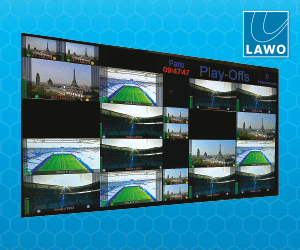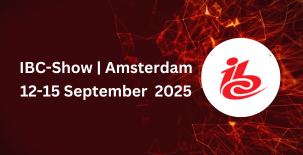In todays digital world, MAM offers much more than a database and has transitioned to a content management system thats fully integrated with the entire business, says Julián Fernández-Campón Over the last ten years, an industry that was mostly hardware-based has been successfully transitioning to an IT world, bringing about huge change to technical workflows […]

In todays digital world, MAM offers much more than a database and has transitioned to a content management system thats fully integrated with the entire business, says Julián Fernández-Campón
Over the last ten years, an industry that was mostly hardware-based has been successfully transitioning to an IT world, bringing about huge change to technical workflows and business practices, and thereby enabling content owners to transition from tape to digital. As weve seen in the past five years, it doesnt stop there. In a multi-screen, multi-channel world, where viewers can watch their favourite shows at home in HD on the TV, or via the internet, or anywhere they like on a second or even third screen device, technology needs to continue to keep up with the trends.
A broadcast technology that has seen significant change and progress during this time is the MAM system. Traditionally designed as a multimedia database, the role of the MAM was to simply store and browse media, together with some associated metadata, without the use of a VTR. This often meant that the archive or HSM system was used by operators as a MAM and was mistakenly put at the centre of daily workflow.
Because of changing market demands and the evolution of technology in terms of computer processing, programming languages and network interconnectivity, the concept of the MAM has changed significantly. Now its quite challenging to find a precise definition of what a MAM is, with growing confusion between DAM, MAM and PAM.
In todays digital world, MAM offers much more than a database. Now users can expect increased content management options (media and all the related information); integration of different areas for processing automation; and sophisticated workflow management for content preparation. Also, user interfaces are now web-based, which simplifies support and opens up the MAM so that it can be accessed from multiple geographical sites.
We can also see that the basic multimedia database that was a MAM has transitioned to a content management system thats fully integrated with the entire business from acquisition, production and delivery to provide efficient and cost-effective operations. However, the desire to achieve these results brings about two new challenges for broadcasters and content owners. The first is the need to streamline operations to ensure cost control and predictability. Although not new, cost reduction is becoming more important due to the unpredictable level of competition in all the territories. The arrival of new, global technologies makes it easy to produce and publish content to a large potential audience using the internet.
The second is multiple content packaging requirements for multi-screen delivery. As highlighted, the way that we consume content has changed dramatically. Traditional linear playout and viewing on-demand content has evolved very quickly into the concept of “content everywhere” via smart TVs, tablets, smart phones and PCs. This has an impact on the preparation and delivery of programming content. Different variations of the same content have to be generated for each destination, made easy to discover and attractive for the viewer with specific languages for each region all while trying to minimise costs.
To help solve these problems, MAM systems have evolved to manage users as well as large amounts of content and related media and attachments, such as audio languages, subtitles and EPG information. MAM now also provides efficient tools to simplify operations and maximise efficiency.
As such, when selecting a MAM, broadcasters and content owners have to consider a number of requirements: integration, improved workflow, access to content throughout the business, increased user experience, reporting processes, scalability and flexibility.
Lets take these points and look at them in more detail. As weve already learnt, integration is key. The MAM needs full integration with different areas of the business for workflow management and content preparation, as well as the web-based user interface. By improving these processes, customers have well-defined and integrated workflows to automate the content and metadata exchange between these areas. This allows operators to focus on specific tasks, for example editing, thereby removing the longstanding problem of carrying out repetitive tasks such as copying files, creating jobs manually and repeatedly entering metadata.
Its important for users to have access to content throughout the business. Todays MAM simplifies content access and discovery and provides low-res browsing of related media, removing the complexity for the user that resides in terms of wrappers and codecs, etc. For some customers the number of files in terms of audio languages, subtitles, scripts and other related information is huge. By providing high-level tools as part of the MAM, this complexity remains hidden and is replaced with a logical view of the content with direct access to the different components for validation, forms to easily select audio and delivery of content in the correct format, etc.
With these tools comes far greater user experience. Its important that the user interfaces are simple and intuitive to optimise operation, using low-res files when possible to reduce latency. In todays broadcast environment the user just wants the tools that they need to get their job done, not a lot of complex options that they will never use.
Reporting is another important factor. Users need a version of the aeronautical “black box”, which collates information about everything thats going on in the system. This provides a solution for a number of reasons. It identifies and solves problems, interacts with the system to prioritise tasks when required, detects bottlenecks and provides a system that acts and reacts as required by the user. It means the user is no longer the slave of the MAM.
Scalability is also crucial. In 2014, customers dont want the “big bang”, they want operational change. This type of change is usually gradual, starting with specific media processing needs that will decrease in some areas and expand in others without affecting the production process. The MAM also needs to be flexible, allowing business needs to evolve without each change involving costly and complex investment, particularly now when companies have to be agile to adapt to new business needs and new content preparation.
Multi-site deployment is yet another area thats often overlooked. Very few customers actually operate on a single site, instead working with many partners in production and distribution. Multiple scenarios can be applied to multi-site deployment, such as cost reduction and operational efficiency to implement a distributed content production chain. Customers might have a central hub to produce their content and other distributed sites to enrich them by adding languages, subtitles, promos, etc., with efficient content transfer and management between them.
Using multi-site deployment, customers can also have a secondary site where part of the operation is replicated and where selected content is automatically transferred for access in the event of a failure at the first site, thereby creating a disaster recovery scenario.
As we can see, the role of the MAM has changed dramatically over the years and Tedials solution delivers a system that answers all of these requirements by providing a combination of features to optimise operations and content management at all levels.
Julián Fernández-Campón is Head of Pre-Sales at Tedial.















































































